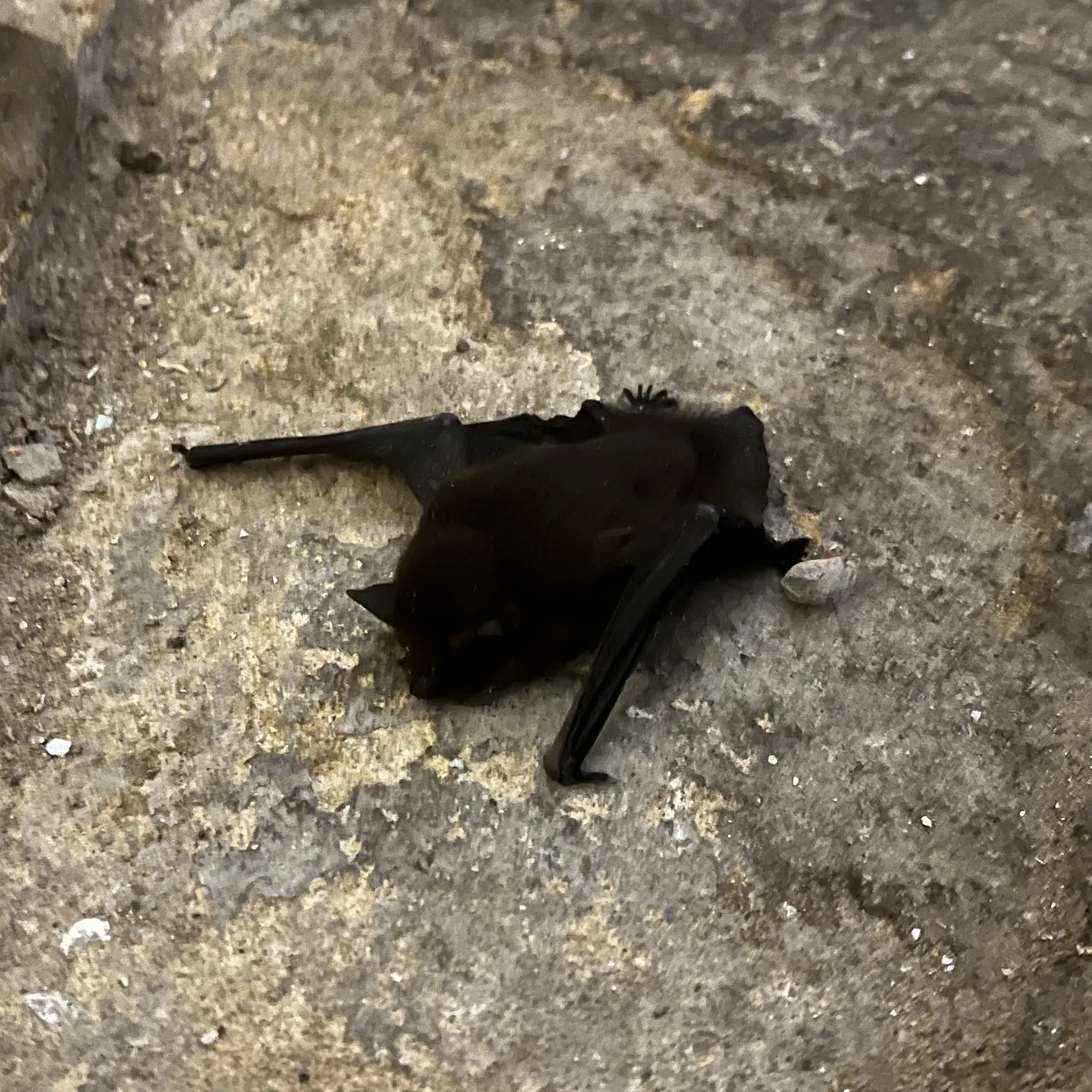On Friday, I found a bat on the floor of our cellar. There’s a photo of it above.
This was a problem. Bats are well-known for being mammals that can fly, and when they’re not flying, they hang upside down to rest. A ‘grounded’ bat lying on the floor is not a sign of a healthy bat.
A quick search led me to the ‘Help! I’ve found a bat‘ page on the Bat Conservation Trust web site. I gave the National Bat Helpline a call, and contained the bat in a shoebox with a small dish of water until a volunteer could arrive to rescue it.
Although it took a while, a lovely volunteer came on Friday evening to collect the bat and take it to a place of safety, where it could be fed and then (hopefully) be released back into the wild. By this time, my wife and eight-year-old got to see the bat, which was nice as my wife loves bats. And it’ll be an interesting story to tell at school this week.
We also found out that it was a male common pipistrelle bat, one of the more common UK bat species. Whilst the IUCN considers them to be ‘least concern’, all bat species in the UK are protected by law. Hopefully, the little guy will get better now that he’s being looked after, and we’ve donated some money to the charity.
However, we’re still not sure how the little bat got into our cellar in the first place. Though the cellar was partly open to the elements as recently as the end of 2022, we’ve since had a new window fitted and a hole fitted in, partly due to a couple of other furry rodents getting in. I suppose it could have been down there all that time and had finally run out of insects to eat. At least he’s in a better place now.

